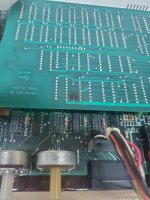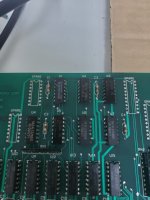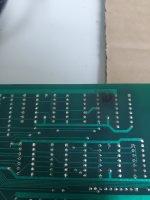currently working on an Osborne executive computer, I am relatively experienced with electronics in general, not so much with older computers such as this.
When we got it, we noticed all the RIFA caps on the psu had blown, going to completely recap the board soon. Until then, I have hooked the machine up to two separate bench psu's. The best result I have gotten so far is a blank orange screen yesterday. Today I turned it on and received the same blank orange screen for a few minutes when the screen went out completely.
So far, I have checked the crt, which seems fine. and attempted to read the voltage coming off of the internal monitor rail, however It does not seem to be outputting +12v
with the bench psu's If I turn on the machine providing +5V the external video will register to my tv (that is to say it goes to a black screen instead of a "no input") and the amperage reads within range. However, when I turn on the +12v PSU It displays no amperage being pulled which was the same before, where it would read 12v 0A if the monitor was not plugged in.
If I am reading the voltage out from the internal monitor connector right, I get ~4.5 volts out on what should be the +12V rail.
However I am unsure if I am reading it correctly as the layout of the connector does not seem to line up with that of the one in the circuit diagram.
Any help would be greatly appreciated.
Thanks
When we got it, we noticed all the RIFA caps on the psu had blown, going to completely recap the board soon. Until then, I have hooked the machine up to two separate bench psu's. The best result I have gotten so far is a blank orange screen yesterday. Today I turned it on and received the same blank orange screen for a few minutes when the screen went out completely.
So far, I have checked the crt, which seems fine. and attempted to read the voltage coming off of the internal monitor rail, however It does not seem to be outputting +12v
with the bench psu's If I turn on the machine providing +5V the external video will register to my tv (that is to say it goes to a black screen instead of a "no input") and the amperage reads within range. However, when I turn on the +12v PSU It displays no amperage being pulled which was the same before, where it would read 12v 0A if the monitor was not plugged in.
If I am reading the voltage out from the internal monitor connector right, I get ~4.5 volts out on what should be the +12V rail.
However I am unsure if I am reading it correctly as the layout of the connector does not seem to line up with that of the one in the circuit diagram.
Any help would be greatly appreciated.
Thanks





